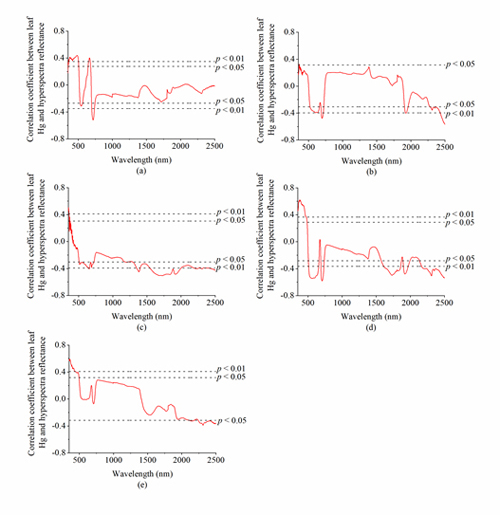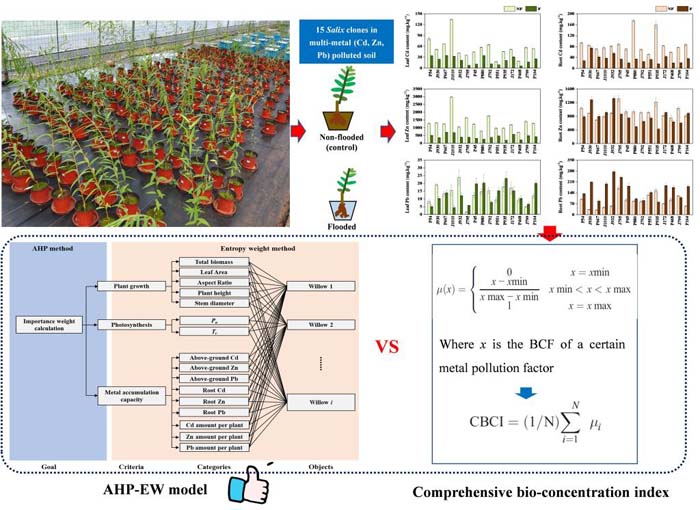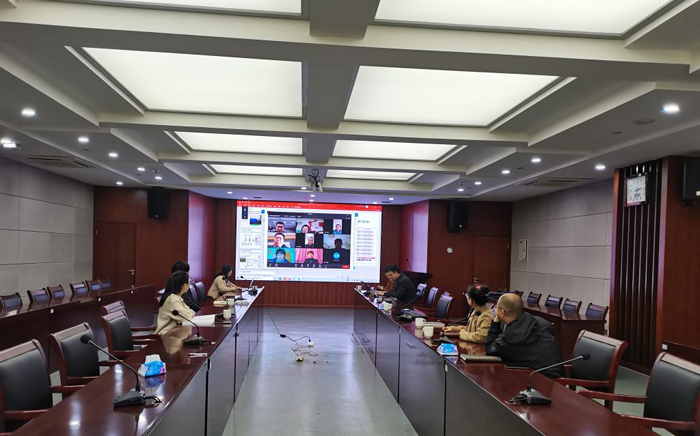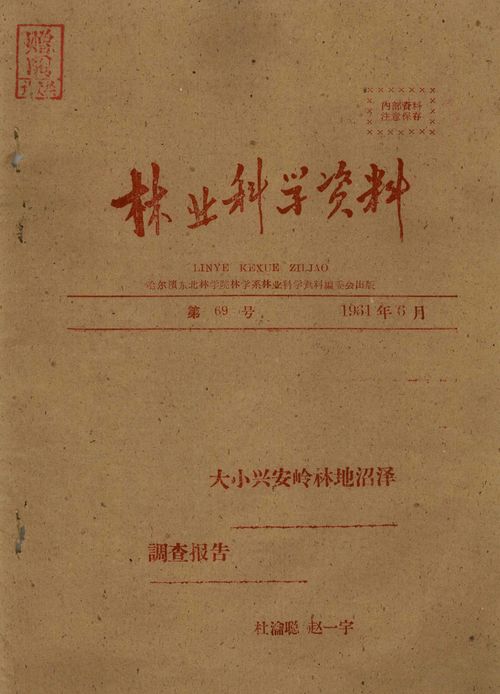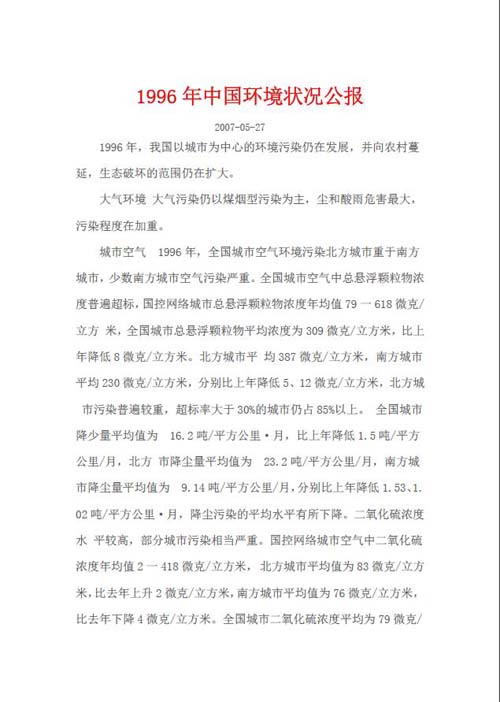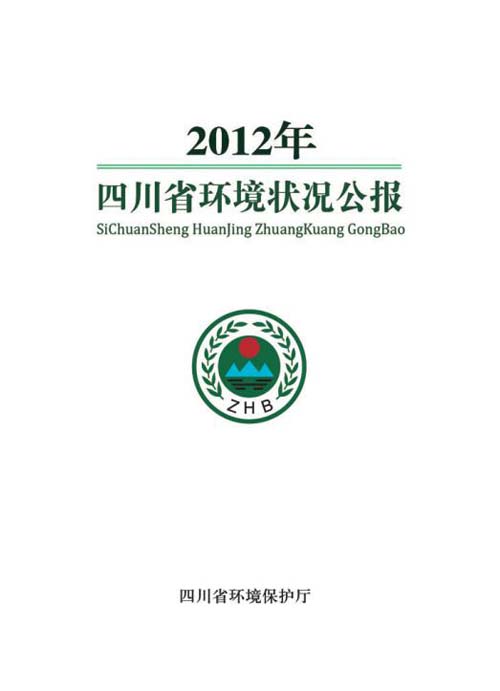
林地重金属污染的微生物修复机制
编号
lyqk008178


中文标题
林地重金属污染的微生物修复机制


作者单位
国家林业和草原局竹子研究开发中心, 杭州 310012


期刊名称
世界林业研究


年份
2020


卷号
33


期号
2


栏目编号
1


栏目名称
专题论述


中文摘要
林地在维持森林生态系统稳定、保护物种多样性、促进经济发展及保障人民生活等方面起着重要作用。但如今大气干湿沉降、矿区及工业生产污染以及有机肥超量施用等造成的重金属污染问题正日益威胁着森林生态系统正常功能的发挥。微生物在林地重金属污染修复方面具有明显效果,对其修复机制进行研究具有重要的理论意义。文中综述林地重金属污染物的来源及微生物修复机制,介绍微生物对重金属的吸附、累积,通过代谢过程对重金属进行氧化、还原、甲基化、去甲基化等生物转化,以及通过矿化、络合作用钝化重金属来修复重金属污染等修复机理,并提出研究展望,以为后续林地土壤微生物修复提供参考。


基金项目
中央级公益性科研院所基本科研业务费专项(CAFYBB2018ZD002)。


英文标题
Research Progress in Heavy Metal Remediation Mechanism by Microorganisms in Forest Soil


作者英文名
Gai Xu, Zhang Xiaoping, Bian Fangyuan, Yang Chuanbao, Zhong Zheke


单位英文名
China National Bamboo Research Center, National Forestry and Grassland Administration, Hangzhou 310012, China


英文摘要
Forest soil plays an important role in maintaining forest ecosystem stability, protecting species diversity, promoting economic development and ensuring people’s livelihood. But heavy metal pollution, which is mainly caused by atmospheric bulk deposition, industrial pollution, overuse of organic fertilizer, etc., has a negative effect on the functions and services of forest ecosystem. Microorganisms have significant effects on remediation of heavy metal pollution in forest soil, and the research on their remediation mechanism has the important theoretic significance. This paper systematically summarizes the sources of heavy metal pollution and the mechanism of heavy metal remediation by microorganisms in forest soil, and introduces the adsorption and bioaccumulation of heavy metals by microorganisms, including the biological transformation such as oxidation, reduction, methylation and demethylation and the bioremediation such as passivation processes through mineralization and complexation. The research prospects are proposed with the expectation to provide the references for the future research on the remediation of heavy metal polluted forest soil by microorganisms.


英文关键词
forest soil;heavy metal pollution;pollution source;microorganism;remediation mechanisms


起始页码
48


截止页码
53


投稿时间
2019-06-05


最后修改时间
2019-09-05


作者简介
盖旭,男,山东临沂人,博士研究生,主要从事森林土壤生态修复,E-mail:xugai@caf.ac.cn。


通讯作者介绍
钟哲科,E-mail:zhekez@163.com。


E-mail
钟哲科,zhekez@163.com


分类号
S718.5,X172


DOI
10.13348/j.cnki.sjlyyj.2019.0098.y


参考文献
[1] 国家统计局.2018年国家年度数据[EB/OL].(2019-01-21)[2019-06-05].http://data.stats.gov.cn/easyquery.htm?cn=C01.
[2] 周垂帆,李莹,殷丹阳,等.林地重金属污染来源解析[J].世界林业研究,2015,28(5):15-21.
[3] 环境保护部,国土资源部.全国土壤污染状况调查公报[J].中国环保产业,2014,36(5):10-11.
[4] EMENIKE C U,JAYANTHI B,AGAMUTHU P,et al.Biotransformation and removal of heavy metals:a review of phytoremediation and microbial remediation assessment on contaminated soil[J].Environmental Reviews,2018,26(1):195-203.
[5] JIN Y Y,LUAN Y N,NING Y C,et al.Effects and mechanisms of microbial remediation of heavy metals in soil:a critical review[J].Applied Sciences-Basel,2018,8(8):98-102.
[6] OMENA O,OLUBUKOLA B.Microbial and plant-assisted bioremediation of heavy metal polluted environments:a review[J].International Journal of Environmental Research and Public Health,2017,14(12):1504-1510.
[7] 龚香宜,祁士华,吕春玲,等.福建省兴化湾大气重金属的干湿沉降[J].环境科学研究,2006(6):31-34.
[8] 黄春雷,宋金秋,潘卫丰.浙东沿海某地区大气干湿沉降对土壤重金属元素含量的影响[J].地质通报,2011,30(9):1434-1441.
[9] 郭世鸿.尤溪铅锌矿不同功能区大气湿沉降重金属污染特征及累积通量研究[C]//中国地质学会2013年学术年会论文摘要汇编:S16矿山地质环境防治研讨会分会场.北京:中国地质学会,2013.
[10] SAWICKA-KAPUSTA K,ZAKRZEWSKA M,DUDZIK P,et al.Input of heavy metals to the forest floor as the result of zinc smelter pollution in southern Poland[C]. E3S Web of Conferences,2013.DOI:10.1051/e3sconf/20130119003.
[11] 朱佳文.湘西花垣铅锌矿区重金属污染土壤生态修复研究[D].长沙:湖南农业大学,2012.
[12] SHU W S,YE Z H,LAN C Y,et al.Acidification of lead/zinc mine tailings and its effect on heavy metal mobility[J].Environment International,2001,26(5):389-394.
[13] 杨聪莉,王百群,申国婷,等.铅锌矿区不同土地利用类型铅污染特征及其影响因素[J].水土保持研究,2018,25(5):351-357.
[14] DAS B,NORDIN R,MAZUMDER A.Watershed land use as a determinant of metal concentrations in freshwater systems[J].Environmental Geochemistry and Health,2009,31(6):595-607.
[15] 方晓波,史坚,廖欣峰,等.临安市雷竹林土壤重金属污染特征及生态风险评价[J].应用生态学报,2015,26(6):1883-1891.
[16] POULSEN H D.Phosphorus utilization and excretion in pig production[J].Journal of Environmental Quality,2000,29(1):24-27.
[17] 华珞,白铃玉,韦东普,等.有机肥-镉-锌交互作用对土壤镉锌形态和小麦生长的影响[J].中国环境科学,2002(4):59-63.
[18] 宋琳琳,铁梅,张朝红,等.施用污泥对土壤重金属形态分布和生物有效性的影响[J].应用生态学报,2012,23(10):2701-2707.
[19] 姜培坤,叶正钱,徐秋芳.高效栽培雷竹林土壤重金属含量的分析研究[J].水土保持学报,2003(4):61-63,74.
[20] 杨芳,徐秋芳.不同栽培历史雷竹林土壤养分与重金属含量的变化[J].浙江林学院学报,2003(2):3-6.
[21] 闫兴凤,李高平,王建党,等.土壤重金属污染及其治理技术[J].微量元素与健康研究,2007(1):52-54.
[22] 曾远.铅锌矿区土壤中特异性微生物吸附转化铅机理研究[D].北京:中国地质大学,2017.
[23] MALIK A.Metal bioremediation through growing cells[J].Environment International,2004,30(2):261-278.
[24] 林治岐,张信,邵尉,等.废水生物处理过程中微生物胞外聚合物与污染物的分子间相互作用[J].中国科学:化学,2018,48(9):1102-1108.
[25] MA Y,HE J,MA C,et al.Ectomycorrhizas with Paxillus involutus enhance cadmium uptake and tolerance in Populus×canescens[J].Plant Cell&Environment,2014,37(3):627-642.
[26] 陈光村.恶臭假单胞菌CZ1非饱和生物膜耐受和累积重金属的分子机制[D].杭州:浙江大学,2011.
[27] WHITE C,GADD G M.Copper accumulation by sulfate-reducing bacterial biofilms[J].Fems Microbiology Letters,2000,183(2):313-318.
[28] 刘磊,宋文成.微生物吸附重金属离子机理研究进展[J].安徽农业科学,2018,46(5):15-17.
[29] 邵鑫,孙凯,熊婧,等.耐镉乳酸菌对重金属镉的吸附机制[J].食品与发酵工业,2017,43(3):48-53,60.
[30] 李三暑,雷锦桂,颜明娟,等.镉对姬松茸细胞悬浮培养的影响及其在细胞中的分布[J].江西农业大学学报,2001(3):329-331.
[31] ZIMMER D,BAUM C,LEINWEBER P,et al.Associated bacteria increase the phytoextraction of cadmium and zinc from a metal-contaminated soil by mycorrhizal willows[J].International Journal of Phytoremediation,2009,11(2):200-213.
[32] 李停停,宗婧婧,高学慧,等.金属硫蛋白的研究进展[J].安徽农业科学,2018,46(25):15-18.
[33] 朱生翠.根际真菌对植物吸收重金属镉的强化作用研究[D].湖南株洲:湖南工业大学,2014.
[34] 魏轲.南极酵母重金属胁迫的蛋白组学及MT基因的克隆和分析[D].哈尔滨:哈尔滨工业大学,2014.
[35] 林稚兰,田哲贤.微生物对重金属的抗性及解毒机理[J].微生物学通报,1998(1):37-39.
[36] 曹德菊,杨训,张千,等.重金属污染环境的微生物修复原理研究进展[J].安全与环境学报,2016,16(6):315-321.
[37] 毕丽,贺纪正,张丽梅,等.环境中汞微生物转化研究进展[J].环境化学,2018,37(11):2359-2367.
[38] DONG G,WANG Y,GONG L,et al.Formation of soluble Cr (III) end-products and nanoparticles during Cr (VI) reduction by Bacillus cereus strain XMCr-6[J].Biochemical Engineering Journal,2013,70:166-172.
[39] 陈楠.微生物在重金属污染土壤修复中的作用研究[J].环境科学与管理,2016,41(2):86-90.
[40] 陈玉成.污染环境生物修复工程[M].北京:化学工业出版社,2003.
[41] COLLIN-HANSEN C,ANDERSEN R A,STEINNES E.Isolation and N-terminal sequencing of a novel cadmium-binding protein from Boletus edulis[J].Journal de Physique IV (Proceedings)/Le Journal de Physique IV, 2003,107:311-314.
[42] 黄建璋.微生物矿化修复铜、铅污染土的效果及稳定性研究[D].江苏扬州:扬州大学,2018.
[43] BENZERARA K,MIOT J,MORIN G,et al.Significance, mechanisms and environmental implications of microbial biomineralization[J].Comptes Rendus-Géoscience,2011,343(2/3):160-167.
[44] 王新花,赵晨曦,潘响亮.基于微生物诱导碳酸钙沉淀(MICP)的铅污染生物修复[J].地球与环境,2015,43(1):80-85.
[45] ACHAL V,PAN X,FU Q,et al.Biomineralization based remediation of As (III) contaminated soil by Sporosarcina ginsengisoli[J]. Journal of Hazardous Materials,2012,201:178-184.
[46] JOHANSSON E M,FRANSSON P M A,FINLAY R D,et al.Quantitative analysis of exudates from soil-living basidiomycetes in pure culture as a response to lead, cadmium and arsenic stress[J].Soil Biology&Biochemistry,2008,40(9):2225-2236.
[47] MANASI,RAJESH V,KUMAR A S K,et al.Biosorption of cadmium using a novel bacterium isolated from an electronic industry effluent[J].Chemical Engineering Journal,2014,235(1):176-185.
[48] 江启沛.药食两用蕈菌姬松茸(Agaricus biazei Murrill)富镉特性及其拮抗抑制研究[D].河北保定:河北农业大学,2003.


PDF全文
浏览全文


-
相关记录
更多
- 林地变化监测技术现状及发展趋势 2022
- 北乌头林地仿野生栽培技术 2021
- 山西省重点监测区使用林地遥感监测分析 2020
- 我国乡村森林旅游开发须破解农村土地集体所有制的法制困局 2019
- 新型城镇化下郊野公园农田林网景观设计方法研究 2018
- 城市重金属污染场地次富集树种标准划定研究 2018
 打印
打印
